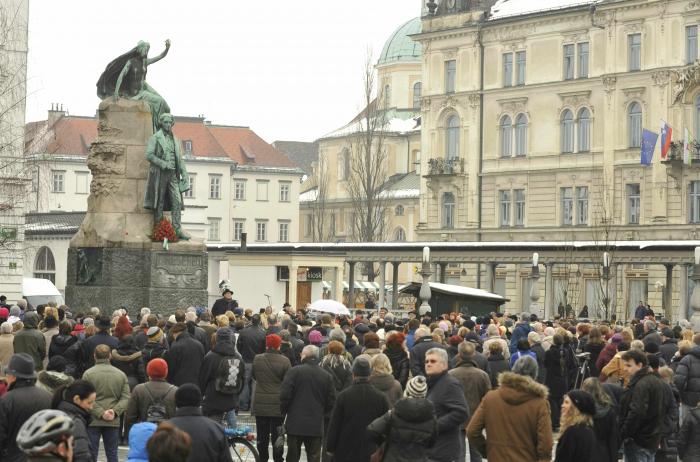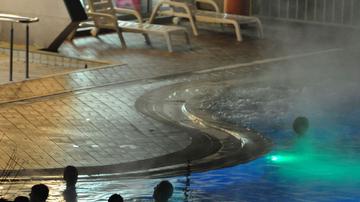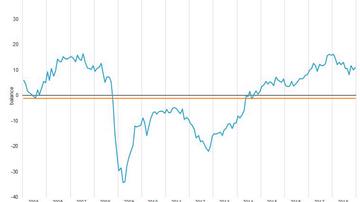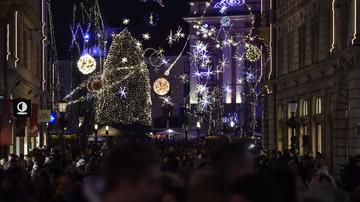

8 February, Prešeren Day, has been celebrated as the day of culture since 1945 and as a national holiday since 1946. It has been a work-free day since 1991.
Official statistical data on the cultural output in Slovenia in 2015 are:
- Slovenian publishers issued 5,411 titles of books and brochures; 1,668 works of literature, of which 901 titles of original Slovenian literature and 767 translations;
- Slovenian theatres performed 6,544 performances, 83% of them own and 17% of them on tours; they were seen by about 850,370 theatregoers, 49% of them watched drama performances;
- professional orchestras and choirs performed 170 concerts at their headquarters, which were attended by about 101,100 people, 223 concerts were held on tour; among 1,860 works 42% were those of Slovenian authors;
- houses of culture prepared 15,763 cultural events; about a quarter were musical events, almost a quarter were film and video productions; cultural events were attended by more than 4 million people;
- film producers produced 22 cinema films, 13 feature and 9 documentary films, and 67 short and medium-length films were produced; 58 Slovenian cinemas were visited by about 2.1 million cinemagoers;
- museums, galleries and exhibition grounds organised 3,502 exhibitions, which were seen by about 2.6 million visitors, 612,000 of them were children and youth;
- public libraries in Slovenia had 479,452 members, just over 23% of Slovenia's population, who borrowed 25.8 milion units of library material (source: National and University Library).
Official statistical data for 2016 are:
- the Register of Intangible Cultural Heritage counted 56 units (practices, presentations, knowledge, skills): 41.1% of them traditional craftsmanship, 39.3% social practices, rituals and festive events, and the rest performing arts, knowledge and practices concerning nature and the universe, and oral traditions and expressions;
- the Register of Immovable Cultural Heritage contained 29,950 units, of which 1.1% monuments of national importance and 26.7% monuments of local importance (source: Register of Cultural Heritage);
How much money is spent on culture?
Since 1999, Slovenia has mostly spent on cultural services – i.e. for the functioning of libraries, museums, galleries, theatres, for concert, stage and film production, for artistic events, etc. – 0.8% of GDP per year; twice (in 2009 and 2010) 0.9% of GDP and twice (in 2007 and 2015) 0.7% of GDP. In the structure of total expenditure in the 15-year period the share of government expenditure on cultural services was 1.7% or 1.8 %; in 2013 it was 1.3%, and in the past two years (2014 and 2015) it was 1.5%. Showing these values by the population and adding some other data, we get the following picture:
In 2015 the government thus spent on average EUR 133 per capita (EUR 6 less than in 2014) on cultural services and each person spent on average EUR 157 (the same as in 2014). Government expenditure on culture per capita was declining between 2010 and 2015. In the same period household expenditure on culture was between EUR 151 and 157 per capita.
However, culture is not only an expense: in 2010–2013 the share of value added in GDP was 1.2%, and in 2014 and 2015 1.1% (the comparison takes into account only culture in the narrow sense, i.e. NACE Rev. 1 activities 58, 59, 60, 90 and 91, while the indirect impact on the hospitality industry, tourism, trade, etc., is not considered).
Ida Repovž Grabnar, Statistical Office of the Republic of Slovenia

































































